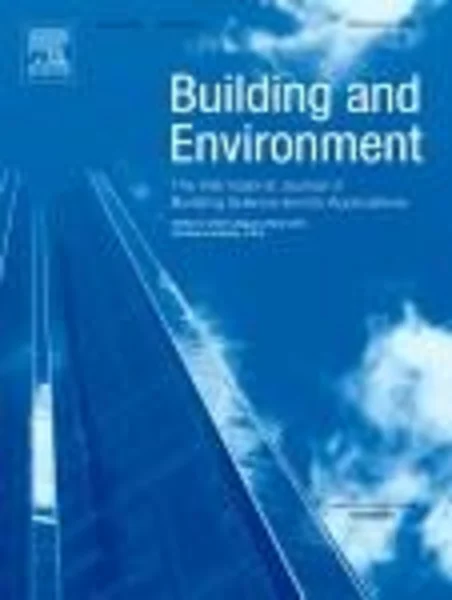-
numerical study of a m-cycle cross-flow heat exchanger for indirect evaporative cooling
جزئیات بیشتر مقاله- تاریخ ارائه: 1390/01/01
- تاریخ انتشار در تی پی بین: 1390/01/01
- تعداد بازدید: 514
- تعداد پرسش و پاسخ ها: 0
- شماره تماس دبیرخانه رویداد: -
in this paper, numerical analyses of the thermal performance of an indirect evaporative air cooler incorporating a m-cycle cross-flow heat exchanger has been carried out. the numerical model was established from solving the coupled governing equations for heat and mass transfer between the product and working air, using the finite-element method. the model was developed using the ees (engineering equation solver) environment and validated by published experimental data. correlation between the cooling (wet-bulb) effectiveness, system cop and a number of air flow/exchanger parameters was developed. it is found that lower channel air velocity, lower inlet air relative humidity, and higher working-to-product air ratio yielded higher cooling effectiveness. the recommended average air velocities in dry and wet channels should not be greater than 1.77 m/s and 0.7 m/s, respectively. the optimum flow ratio of working-to-product air for this cooler is 50%. the channel geometric sizes, i.e. channel length and height, also impose significant impact to system performance. longer channel length and smaller channel height contribute to increase of the system cooling effectiveness but lead to reduced system cop. the recommend channel height is 4 mm and the dimensionless channel length, i.e., ratio of the channel length to height, should be in the range 100 to 300. numerical study results indicated that this new type of m-cycle heat and mass exchanger can achieve 16.7% higher cooling effectiveness compared with the conventional cross-flow heat and mass exchanger for the indirect evaporative cooler. the model of this kind is new and not yet reported in literatures. the results of the study help with design and performance analyses of such a new type of indirect evaporative air cooler, and in further, help increasing market rating of the technology within building air conditioning sector, which is currently dominated by the conventional compression refrigeration technology.
مقالات جدیدترین رویدادها
-
استفاده از تحلیل اهمیت-عملکرد در ارائه الگوی مدیریت خلاقیت سازمانی و ارائه راهکار جهت بهبود
-
بررسی تاثیر ارزش وجوه نقد مازاد بر ساختار سرمایه شرکت های پذیرفته شده در بورس اوراق بهادار تهران
-
بررسی تأثیر سطح افشای ریسک بر قرارداد بدهی شرکت های پذیرفته شده در بورس اوراق بهادار تهران
-
بررسی تأثیر رتبه بندی اعتباری مبتنی بر مدل امتیاز بازار نوظهور بر نقد شوندگی سهام با تأکید بر خصوصی سازی شرکت ها
-
تأثیر آمیخته بازاریابی پوشاک ایرانی بر تصویر ذهنی مشتری پوشاک ایرانی (هاکوپیان)
-
بررسی شیوع بیضه نزول نکرده (کریپتورکیدیسم) در نوزادان متولد شده در بیمارستان حکیم هیدجی زنجان
-
تحلیل پروژه احیای میدان عتیق اصفهان
-
بررسی وضعیت آسیب پذیری ساختمان های بتنی با کاربری مسکونی در شهرستان کاشمر
-
some result about relative non-commuting graph
-
evaluation of image reconstruction algorithms for non-destructive characterization of thermal interfaces
مقالات جدیدترین ژورنال ها
-
مدیریت و بررسی افسردگی دانش آموزان دختر مقطع متوسطه دوم در دروان کرونا در شهرستان دزفول
-
مدیریت و بررسی خرد سیاسی در اندیشه ی فردوسی در ادب ایران
-
واکاوی و مدیریت توصیفی قلمدان(جاکلیدی)ضریح در موزه آستان قدس رضوی
-
بررسی تاثیر خلاقیت، دانش و انگیزه کارکنان بر پیشنهادات نوآورانه کارکنان ( مورد مطالعه: هتل های 3 و 4 ستاره استان کرمان)
-
بررسی تاثیر کیفیت سیستم های اطلاعاتی بر تصمیم گیری موفق در شرکتهای تولیدی استان اصفهان (مورد مطالعه: مدیران شرکتهای تولیدی استان اصفهان)
-
بررسی عوامل اجتماعی موثر بر شکل گیری کلیشه های جنسیتی
-
بررسی نقص حقوق جنگ در مخاصمات مسلحانه بشر دوستانه بین اکراین و روسیه
-
بررسی تاثیر مدیریت، برنامه ریزی و کنترل هزینه بر عملکرد مالی شرکت ها
-
performance evaluation of modified bitumen with replaced percentage of waste cooking oil & tire rubber with bagasse ash as modifier
-
the sustainability of cement mortar with raw sewage sludge and rice husk ash




سوال خود را در مورد این مقاله مطرح نمایید :